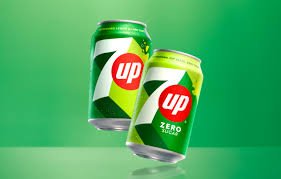The competition between Coca-Cola and PepsiCo remains one of the most iconic rivalries in the global beverage industry. Both companies are giants, with operations spanning across almost every country in the world. Coca-Cola Company reported a revenue of $43 billion in 2022, while PepsiCo, benefiting from a diversified portfolio that includes snacks and beverages, generated $86 billion in revenue during the same period. Despite their comparable influence in the beverage market, these two companies have distinct strategies and market strengths, leading to unique trajectories in their global operations.
Coca-Cola dominates in regions like Latin America, Africa, and Europe, holding significant market shares, often above 40% in carbonated soft drinks (CSDs). Iconic products like Coca-Cola Classic, Diet Coke, Sprite, and Fanta continue to drive its revenue in these areas. In contrast, PepsiCo has a stronger foothold in North America and certain parts of Asia, particularly in India. PepsiCo’s advantage lies in its diverse product mix, which includes not only beverages like Pepsi, Mountain Dew, and 7UP but also popular snack brands such as Lay’s, Doritos, and Quaker. This diversification allows PepsiCo to mitigate risks associated with declining demand in the CSD market, a challenge Coca-Cola faces more acutely due to its focus on beverages.
Regional Market Strengths and Core Products
The rivalry between these two companies is evident in their regional market shares. Coca-Cola leads in countries like Mexico, where its products account for nearly 70% of the CSD market. Similarly, in parts of Africa, Coca-Cola has established a near-monopoly in soft drinks due to its robust distribution network and localized marketing strategies. Meanwhile, PepsiCo’s dominance is particularly pronounced in the United States, where it has captured a significant portion of the snack market in addition to beverages. The success of brands like Gatorade, Tropicana, and Aquafina in North America underscores PepsiCo’s ability to appeal to a broad consumer base.
In Asia, Coca-Cola and PepsiCo are engaged in fierce competition, particularly in India and China. India’s beverage market has seen PepsiCo gain traction with its localized flavors and snack offerings, while Coca-Cola continues to capitalize on its globally recognized brand. In China, both companies are investing heavily in marketing and distribution to capture the growing demand for non-carbonated beverages, such as ready-to-drink teas and juices. Products like Minute Maid and Lipton have become critical in these markets, reflecting changing consumer preferences.
Future Prospects and Competitive Dynamics
Looking ahead, the competition between Coca-Cola and PepsiCo will hinge on their ability to innovate and adapt to shifting consumer preferences. With global demand for carbonated beverages steadily declining, both companies are focusing on expanding their portfolios to include healthier and more sustainable options. Coca-Cola’s acquisition of Costa Coffee and its investments in bottled water and plant-based beverages signal its intent to diversify beyond traditional sodas. PepsiCo, meanwhile, continues to lead in this area, leveraging its snack portfolio and introducing new products in categories such as low-sugar beverages, energy drinks, and plant-based protein snacks.
The companies are also embracing digital transformation to strengthen their consumer engagement. From personalized marketing campaigns to e-commerce platforms, both Coca-Cola and PepsiCo are leveraging technology to enhance their reach and efficiency. Additionally, sustainability has become a central theme in their strategies. Both companies have set ambitious goals to reduce plastic waste, improve water usage efficiency, and achieve net-zero carbon emissions in their operations by mid-century.
Addressing Declining Demand for Carbonated Beverages
As consumer preferences continue to shift towards healthier lifestyles, the global demand for carbonated beverages is expected to decline further. This trend presents a significant challenge for Coca-Cola and PepsiCo, as CSDs have historically been their core revenue drivers. In response, both companies are intensifying their focus on non-carbonated beverages and functional drinks.
Coca-Cola is ramping up its investments in bottled water, sports drinks, and plant-based beverages. Products like Smartwater, Powerade, and Innocent Drinks are gaining traction among health-conscious consumers. PepsiCo is pursuing a similar strategy, with brands like Gatorade Zero, Bubly sparkling water, and Tropicana Essentials positioned to capture the growing demand for healthier options. Additionally, the rise of energy drinks presents a lucrative opportunity, with Coca-Cola’s partnership with Monster Beverage Corporation and PepsiCo’s acquisition of Rockstar Energy Drinks reflecting their commitment to this segment.
Both companies are also adapting their marketing strategies to appeal to younger, health-conscious consumers. From introducing smaller packaging sizes to reducing sugar content in their beverages, Coca-Cola and PepsiCo are making concerted efforts to align with evolving consumer expectations. The challenge, however, lies in maintaining profitability while transitioning away from traditional revenue streams.
In conclusion, the rivalry between Coca-Cola and PepsiCo remains as intense as ever, with both companies vying for dominance in an evolving global market. While Coca-Cola’s strength lies in its brand equity and beverage portfolio, PepsiCo’s diversified product mix provides it with a competitive edge. As the industry navigates the challenges of declining demand for carbonated beverages, innovation and adaptability will be key to sustaining growth and relevance in the years to come.

